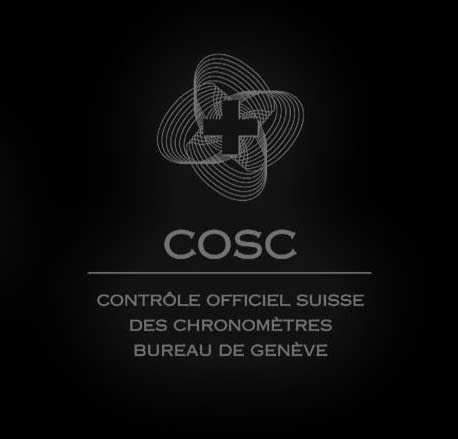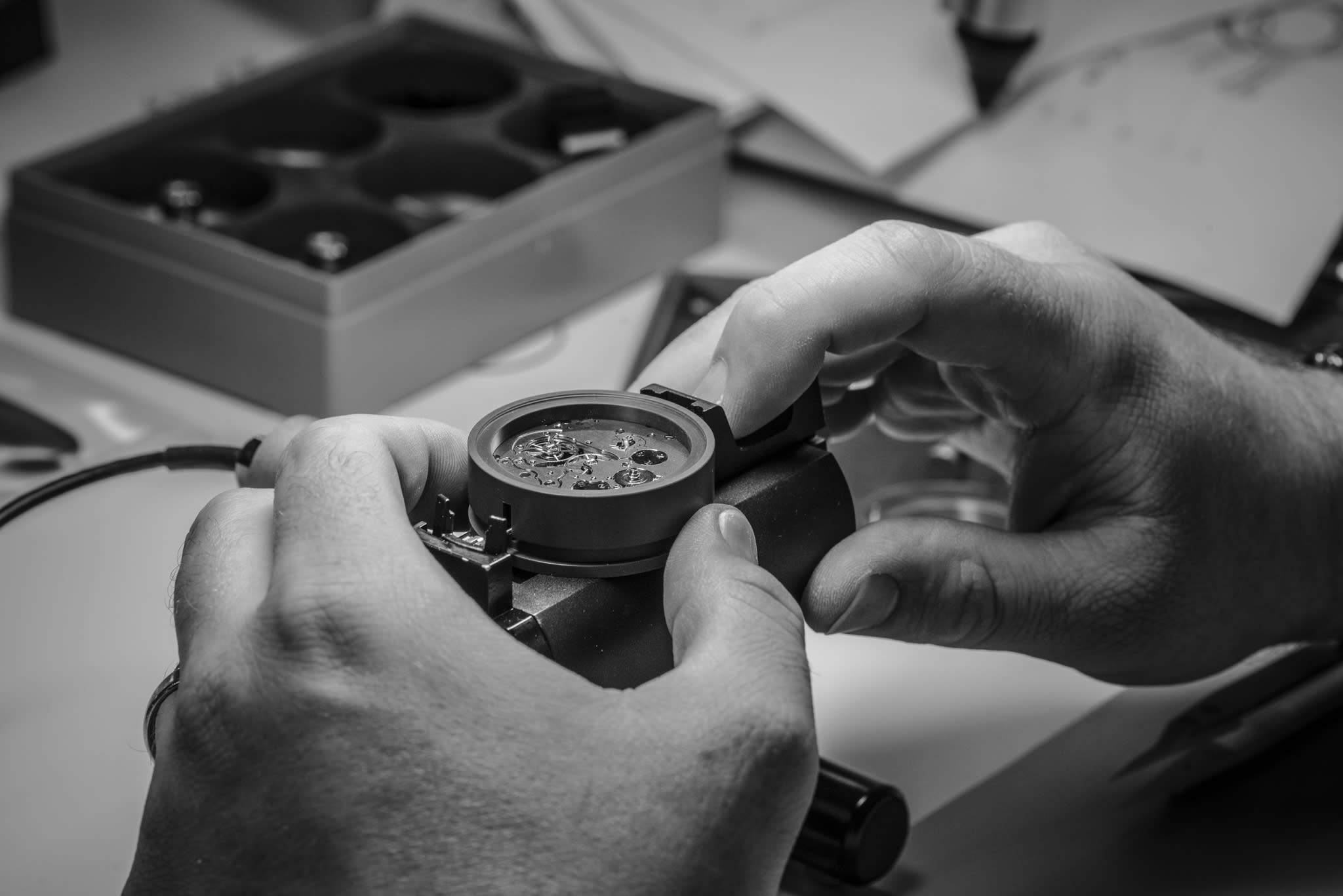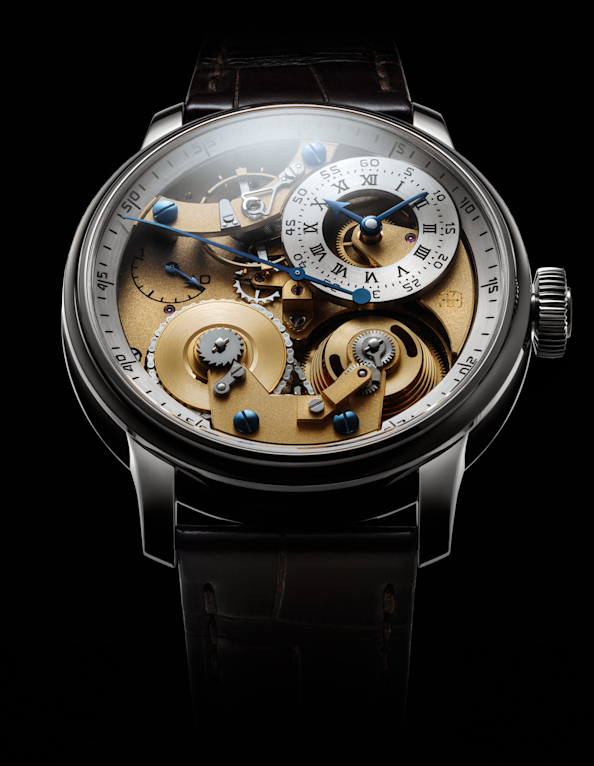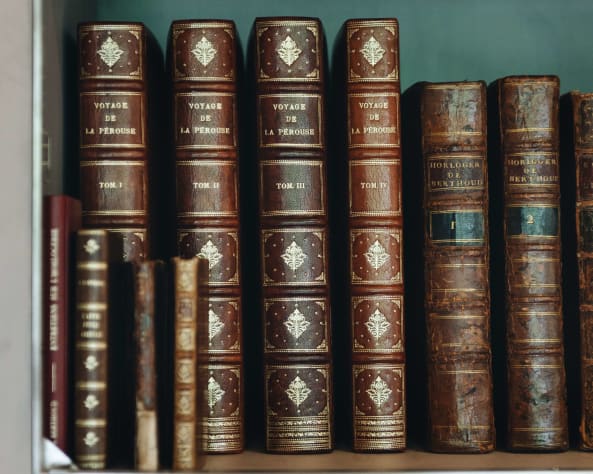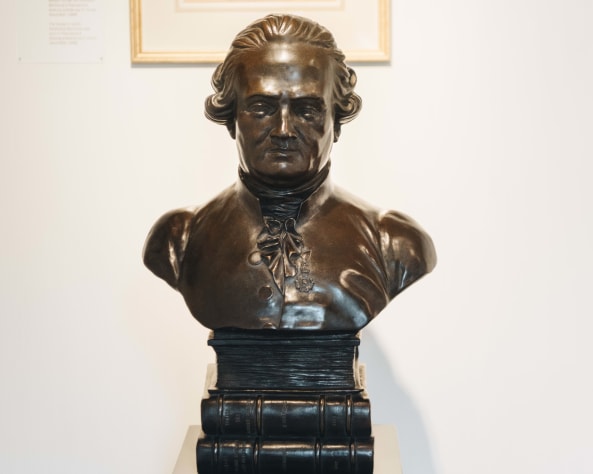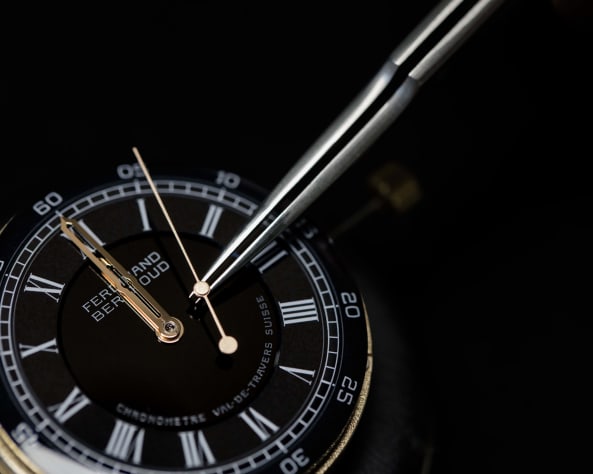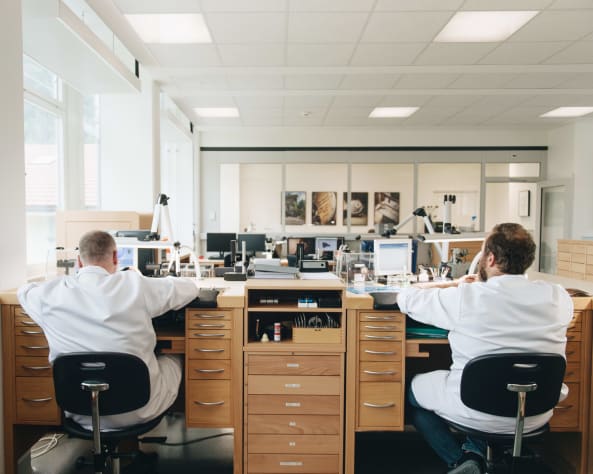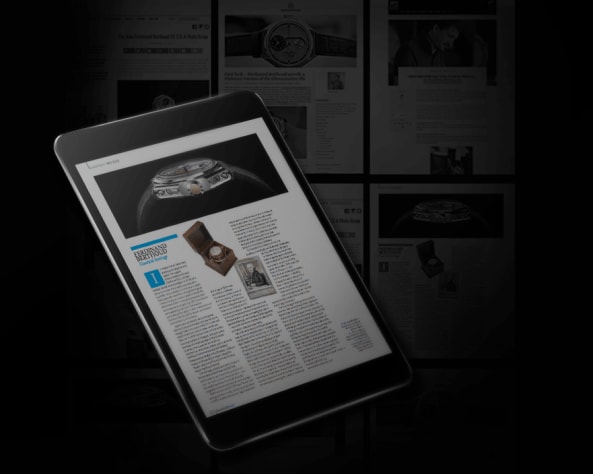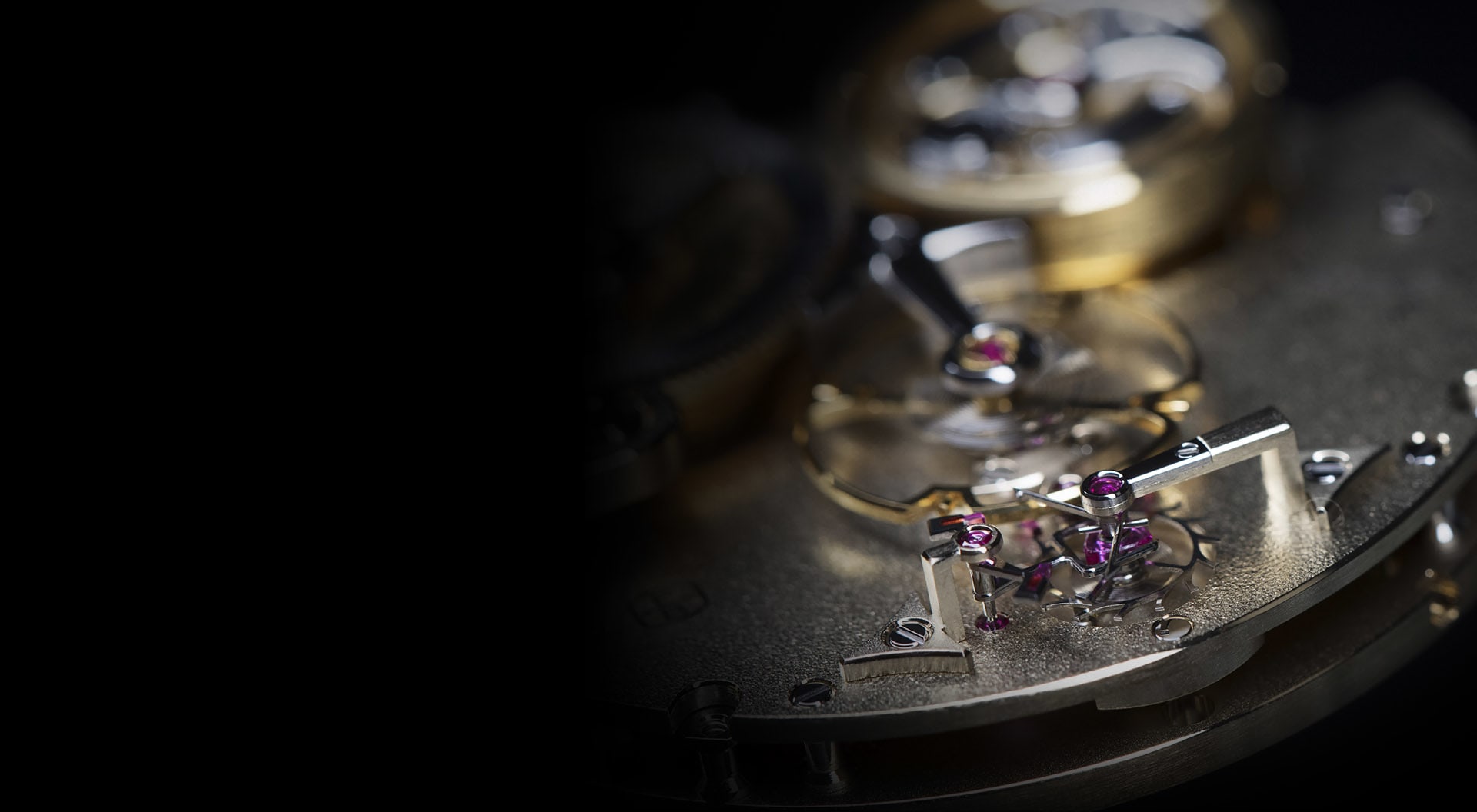Ferdinand Berthoud timepieces require ancestral know-how combined with cutting-edge technology, two qualities fully mastered by company's engineers and craftsmen.
Machines have no place within Chronométrie Ferdinand Berthoud. Entirely hand-decorated using traditional tools identical to those used by Ferdinand Berthoud, each component, even if invisible, contributes to the beauty of the movement. Performing the numerous and complex operations of traditional decoration therefore requires years of learning, considerable mastery and a great deal of patience. Chamfer is a perfect example: the hand of the craftsman forming the bevel to be polished must be safe, delicate and meticulous so that the edges of the pieces shine with incomparable brilliance. Specular (also known as black or mirror) polishing is another illustration, involving polishing the surfaces in such a way as to ensure that light is reflected in one direction only.
At each stage in the manufacture of these components, the finishes are checked under a 6.7x loupe. Since no imperfection is tolerated, this higher than usual degree of magnification ensures that no detail, however small, goes unnoticed.
Such is the vision of watchmaking excellence cultivated by Chronométrie Ferdinand Berthoud.
Excellence
in all things
Driven by passion for the crafting of unique timepieces, our desire is to push the performance of our in-house calibres to even greater heights. By combining history and avant-garde technology, fine craftsmanship and traditional expertise, the technicians and craftsmen of Chronométrie Ferdinand Berthoud give rise to exceptional watches. A timepiece emerging from our workshops is the result of several years of design and many months of meticulous production. The greatest care is taken in the crafting and finishing of all its components, whose beauty reflects the perfection of the movement driving them, Rare and precious objects, our chronometers bear witness to the passion that impelled the explorers of the Age of Enlightenment, for whom the illustrious Master Watchmaker-Mechanic created masterpieces.
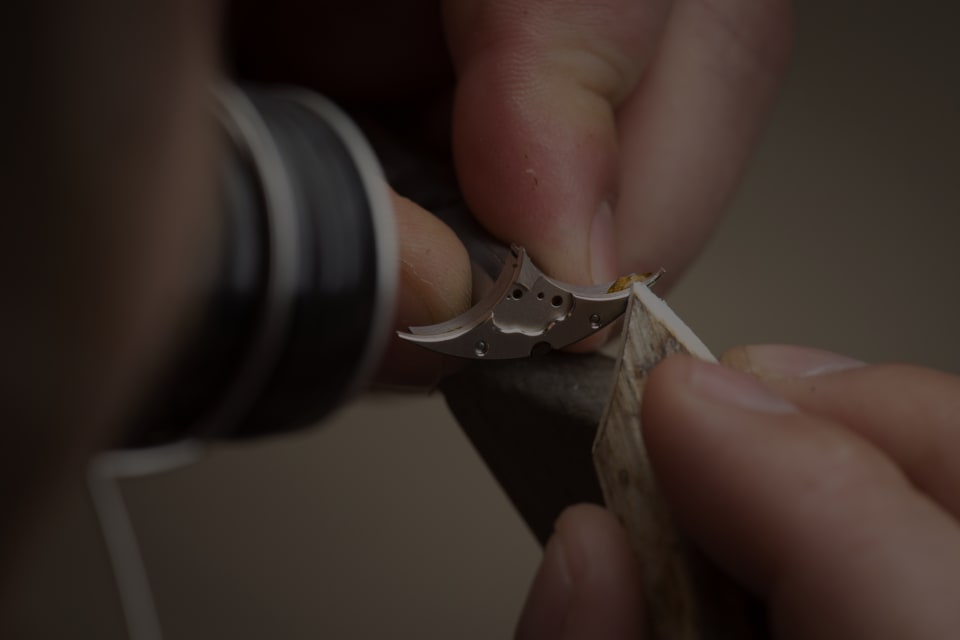
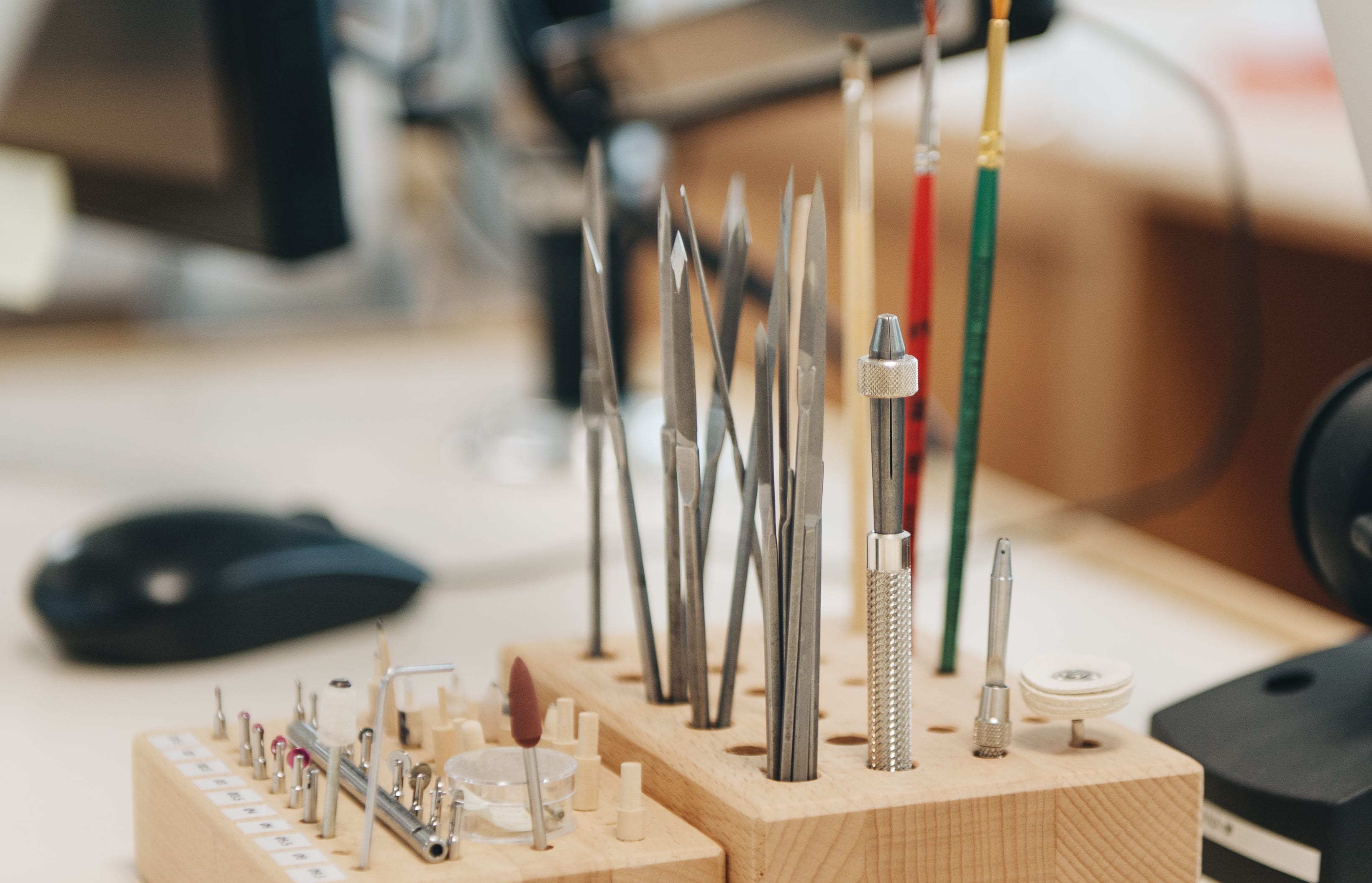
AN INSISTENCE ON HAND CRAFTSMANSHIP
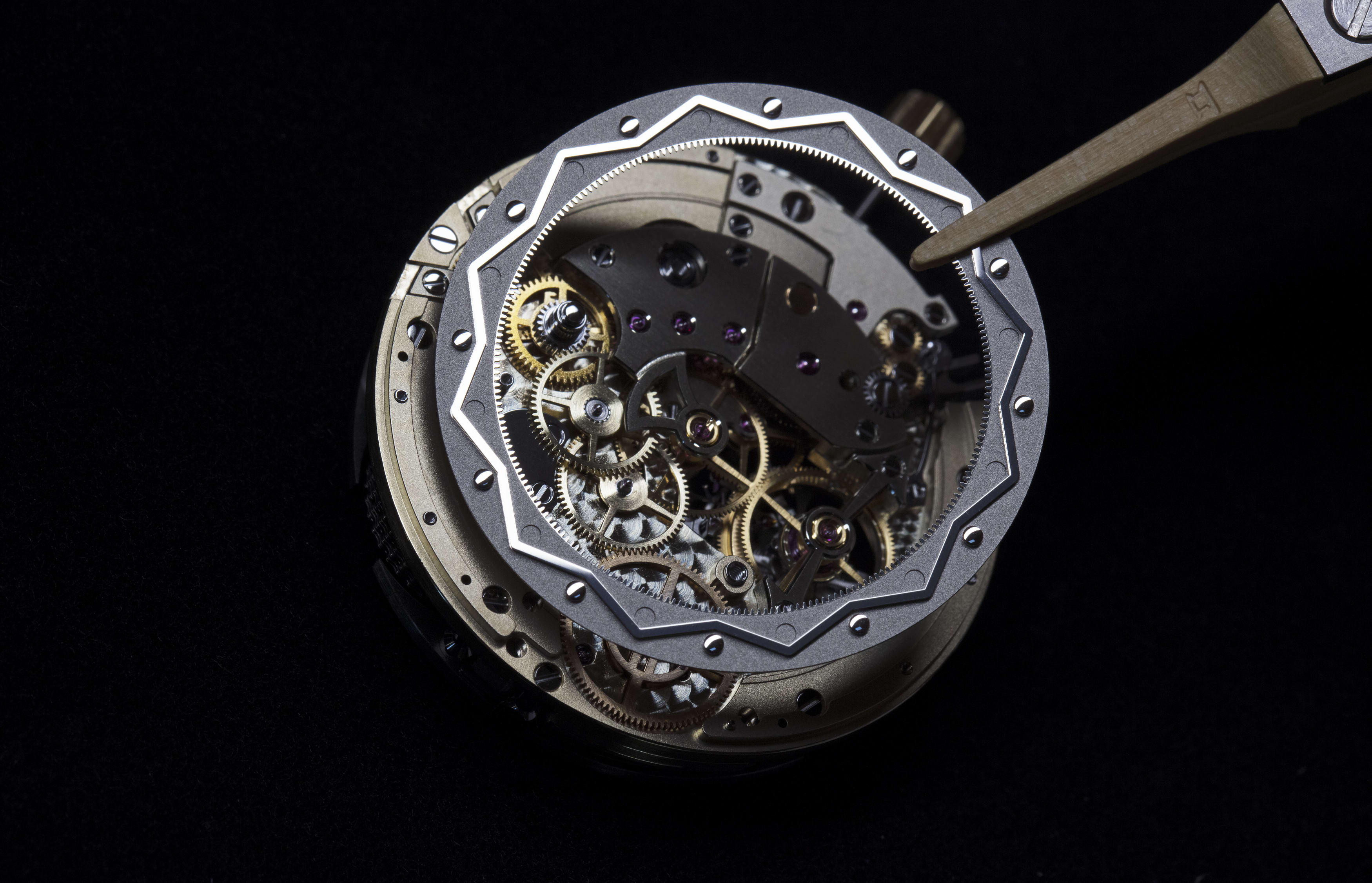
INNOVATION FOREVER ON THE HORIZON
Within Chronométrie Ferdinand Berthoud, innovation is a powerful driving force and a living legacy. Witness the unprecedented pillar design of the FB-T.FC calibre, its tourbillon with direct-drive centre seconds, its reversed constant-force regulation device by suspended fusee-and-chain transmission and its power-reserve mechanism featuring a suspended mobile cone.
No fewer than four patent applications have been filed for the Chronomètre FB 1 alone. The use of new materials, the search for new techniques and the development of the noblest finishes testify to a constant desire for inventiveness. A case in point is carburised steel, a type of metal whose molecular structure has been reinforced by a thermochemical process and is used for the case of the Chronomètre FB 1R.6-1; nickel silver with vertical satin-brushed finishes for the dials; driving in, rather than cementing, for the sapphire crystal portholes; platinum 950 for the case of the Chronomètre FB 1.3; and polished platinum for the Chronomètre FB 1.4.
For Chronométrie Ferdinand Berthoud, perpetuating the legacy of the past and cultivating traditions offers the promise of a bright future.

COSC AND THE ISO 3159 NORM
Each movement is individually controlled according to a type-specific test program for 16 consecutive days in five positions and at three temperatures. Each Chronomètre FERDINAND BERTHOUD is unique. It is identified by two numbers: one engraved on its movement, the other on a certificate issued by the COSC.
In addition, only wrist chronometer movements meeting the precision criteria set out in ISO 3159 receive an official chronometer certificate.
